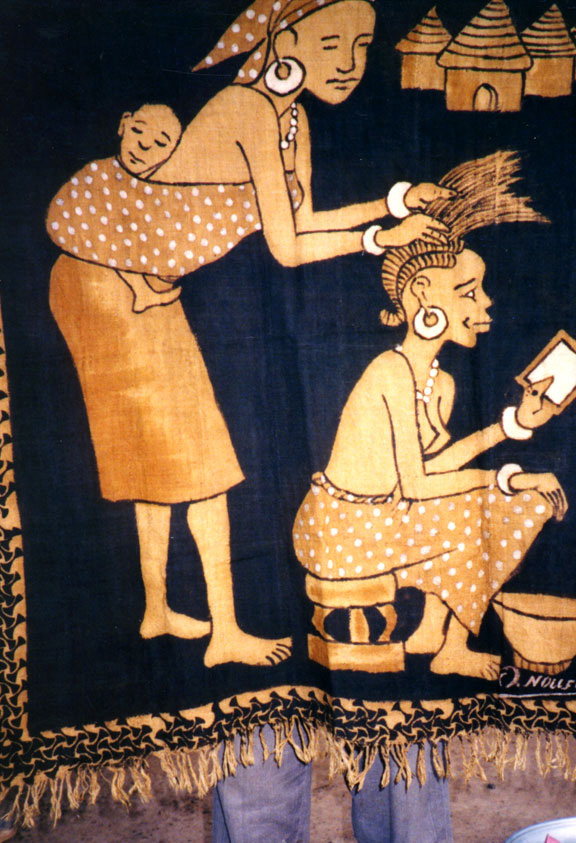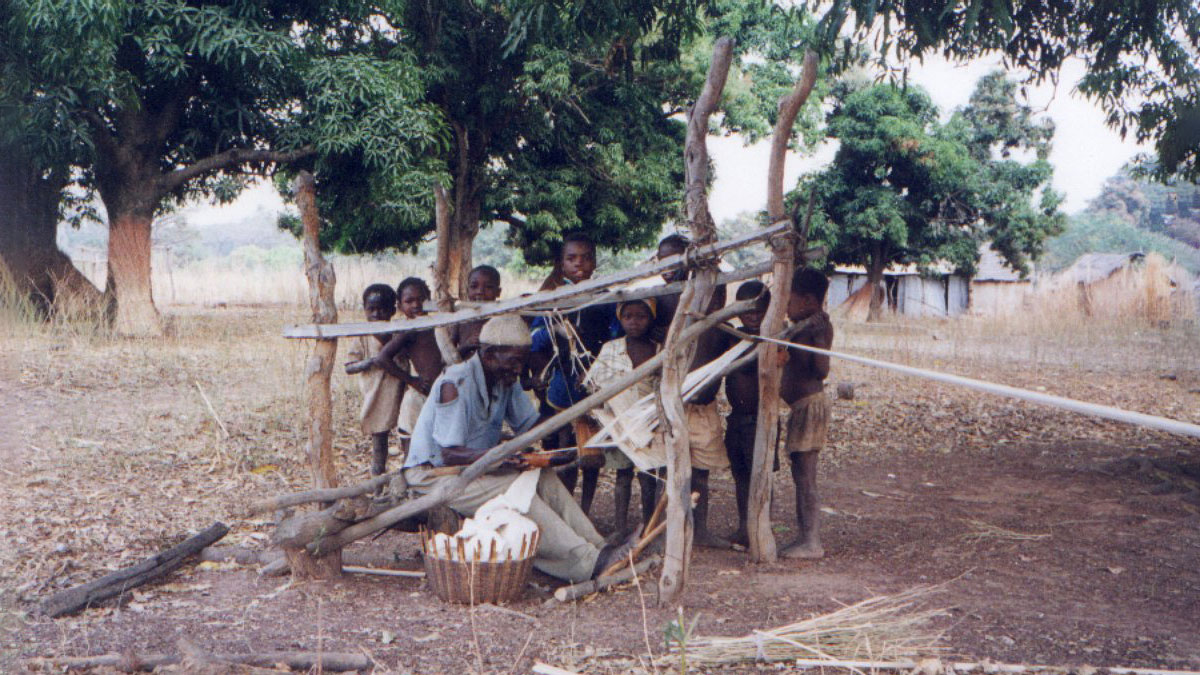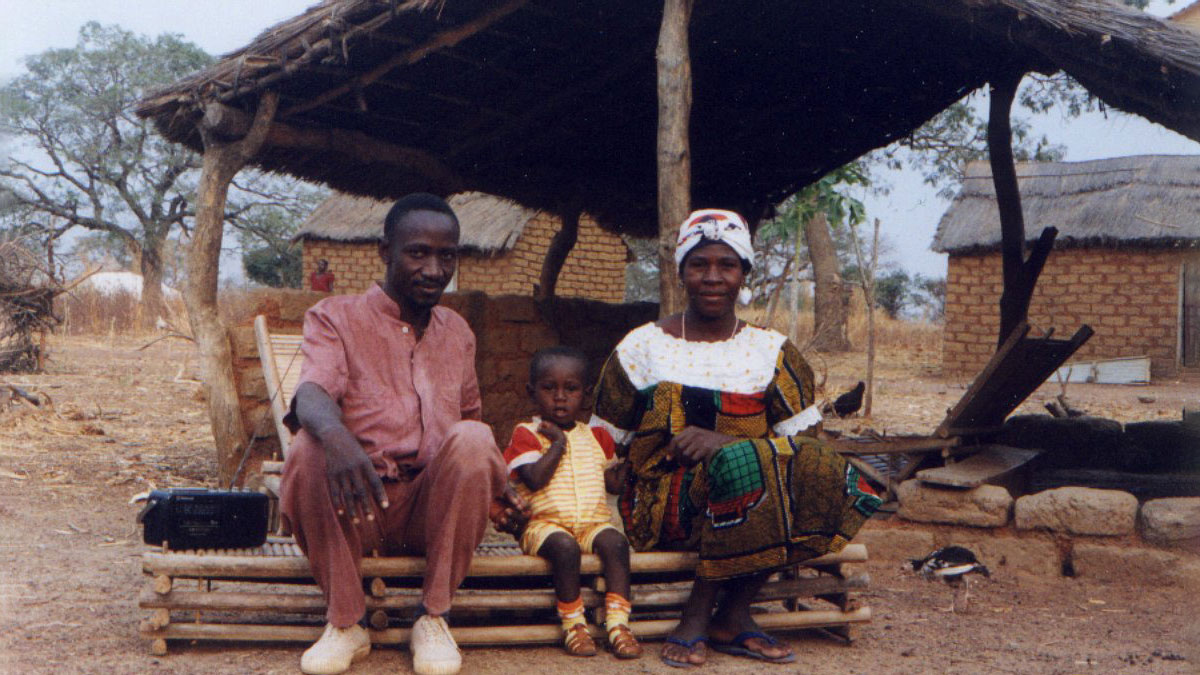Senufo-Tagba of West Africa

Mud Cloth
Locally-made mud cloth is cotton cloth decorated and dyed with natural materials that blend into the colors of the Senufo landscape. Originally, the clothes made from mud cloth were worn only by hunters, who appreciated the cloth's natural camouflaging ability. Now up to one-quarter of the population wears mud cloth as everyday clothing. Though more expensive, the cloth is popular with non-hunters because it does not show dirt. Mothers will wrap their babies to their backs using large, rectangular mud cloths.

Making Mudcloth
Mud cloths are made of 100% cotton that is locally grown, spun, and woven. Before the colonization of Africa by Europeans, cotton was grown in small amounts for local use. Now, it is the main cash crop of the Senufo, which means that most of the cotton is raised to be sold to other countries.
Through observation and practice, anyone in the village can learn to make a mud cloth. Some, though, are recognized as having special talent in this area. These individuals will sell their cloth to a much wider market, some as far away as Europe. With this expansion of trade to other continents, some artists have begun signing their work.

